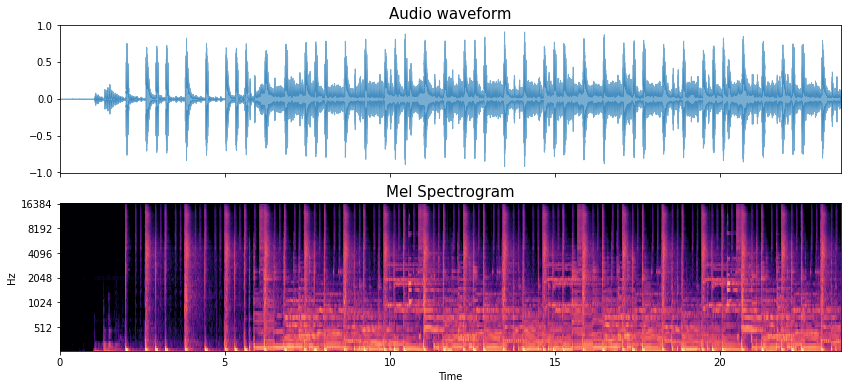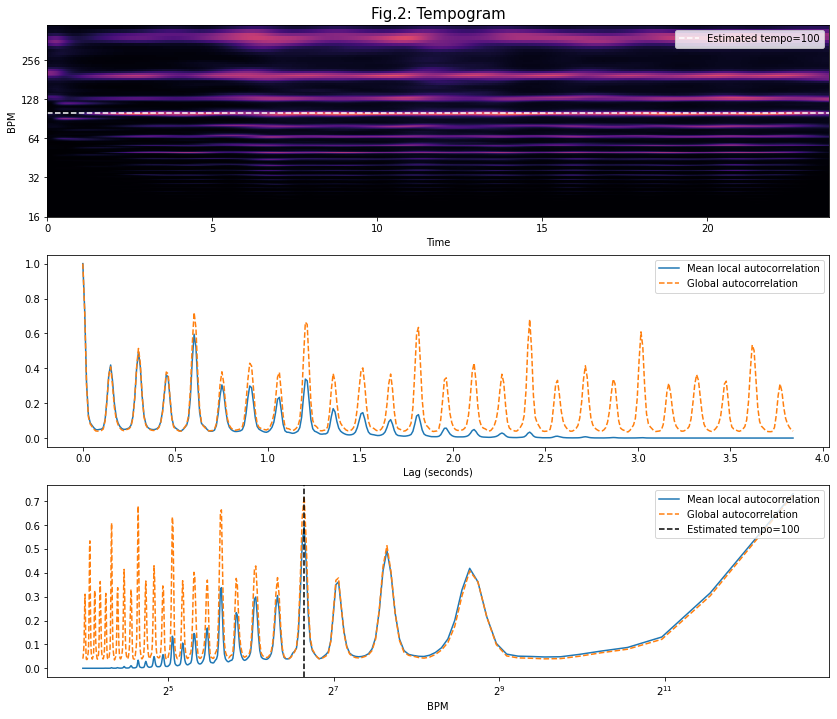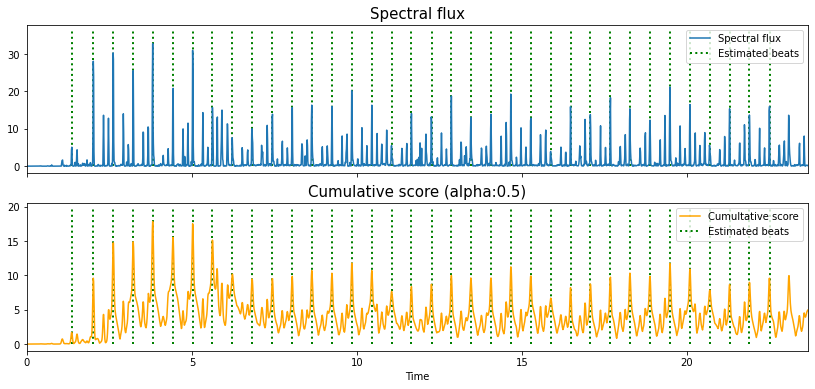1
2
3
4
5
6
7
8
9
10
11
12
13
14
15
16
17
18
19
20
21
22
23
24
25
26
27
28
29
30
31
32
33
34
35
36
37
38
39
40
41
42
43
44
45
46
47
48
49
50
51
52
53
54
55
56
57
58
59
60
61
62
63
64
65
66
67
68
69
|
fig, ax = plt.subplots(nrows=3, figsize=(14, 12))
tempogram = librosa.feature.tempogram(onset_envelope=spectral_flux,
sr=sr, hop_length=hop_length)
librosa.display.specshow(tempogram, sr=sr, hop_length=hop_length,
x_axis='time', y_axis='tempo', cmap='magma',
ax=ax[0])
tempo = librosa.beat.tempo(onset_envelope=spectral_flux, sr=sr,
hop_length=hop_length)[0]
ax[0].axhline(tempo, color='w', linestyle='--', alpha=1,
label='Estimated tempo={:g}'.format(tempo))
ax[0].legend(loc='upper right')
ax[0].set_title('Fig.2: Tempogram',fontsize=15)
ac_global = librosa.autocorrelate(spectral_flux, max_size=tempogram.shape[0])
ac_global = librosa.util.normalize(ac_global)
x_scale = np.linspace(start=0, stop=tempogram.shape[0] * float(hop_length) / sr,
num=tempogram.shape[0])
ax[1].plot(x_scale, np.mean(tempogram, axis=1), label='Mean local autocorrelation')
ax[1].plot(x_scale, ac_global, '--', label='Global autocorrelation')
ax[1].legend(loc='upper right')
ax[1].set(xlabel='Lag (seconds)')
freqs = librosa.tempo_frequencies(n_bins = tempogram.shape[0],
hop_length=hop_length, sr=sr)
ax[2].semilogx(freqs[1:], np.mean(tempogram[1:], axis=1),
label='Mean local autocorrelation', basex=2)
ax[2].semilogx(freqs[1:], ac_global[1:], linestyle='--',
label='Global autocorrelation', basex=2)
ax[2].axvline(tempo, color='black', linestyle='--',
label='Estimated tempo={:g}'.format(tempo))
ax[2].legend(loc='upper right')
ax[2].set(xlabel='BPM')
plt.show()
|













